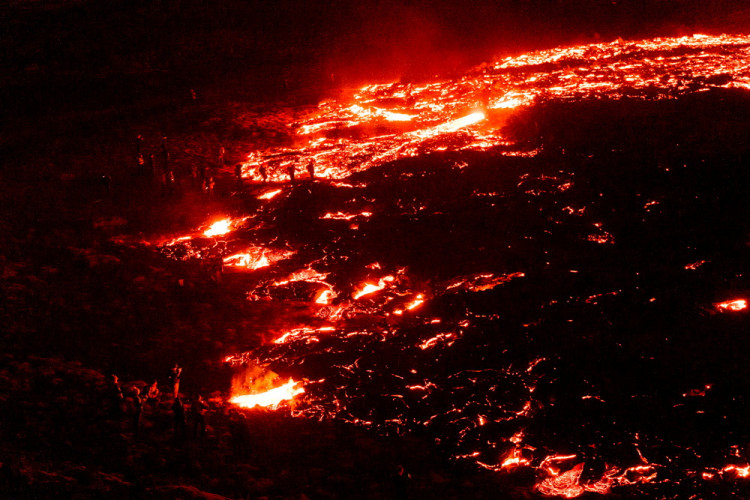A volcano erupted on Iceland's Reykjanes Peninsula late Monday, causing significant concern among local residents and authorities. Following a series of tremors that shook the community for weeks, the eruption began around 10 p.m. local time, just after an earthquake an hour earlier. The Icelandic Meteorological Office confirmed the eruption's proximity to Hagafell, about 3 kilometers north of Grindavík, a town near the famous Blue Lagoon geothermal spa.
The magnitude and impact of the eruption were significant. According to a statement from Iceland's government on Tuesday, the fissure opening extended nearly 4 kilometers, making it the fourth eruption in the area since 2021 and the largest to date. The incident prompted an immediate evacuation order for Grindavík's residents. More than 3,000 people were successfully moved from the town, which was at risk of being in the lava's path. Despite the large-scale evacuation, the government assured that the eruption did not pose a direct threat to life.
Just wow!
Aerial footage of the Iceland Volcano pic.twitter.com/rAwiiVPeWy — Jay (@AckerlandJay) December 19, 2023
Iceland's Coast Guard captured the dramatic scene, with a video showing their helicopter hovering over glowing lava spurting from the ground fissure, surrounded by a smoke-filled sky illuminated by bright orange and red hues. The area has been closed to all traffic, and people are strongly advised not to approach the eruption site.
This volcanic activity follows an intense wave of seismic events in the region. Last month, residents of Grindavík and nearby settlements were prevented from staying in their homes overnight due to the potential threat of an eruption. The country's Civil Protection Agency had previously warned of a magma tunnel forming that could reach the town. In 1973, a similar eruption in Vestmannaeyjar began without warning, leading to the destruction of 400 homes.
The Blue Lagoon, a major tourist draw with its steaming water, had closed temporarily last month following initial signs of a possible eruption. Authorities had also prepared a protective trench around a geothermal power plant near Grindavík that provides electricity and geothermal water for heating to a population of 30,000 on the peninsula.
As of Tuesday, there were no disruptions to flights to and from Iceland, and international flight corridors remained open. Iceland, sitting on a tectonic plate boundary that continually splits apart, is home to 32 active volcanoes. The island nation is accustomed to volcanic eruptions, often occurring in the wilderness, away from populated areas. The most notable recent eruption was the Fagradalsfjall volcanic system in 2021, which did not threaten populated areas and even became a tourist attraction.
Experts do not anticipate this eruption causing the same level of disruption as the 2010 Eyjafjallajökull eruption, which involved glacial ice leading to a massive ash cloud that canceled about 100,000 flights and affected 2 million people. Lionel Wilson, Emeritus Professor of Earth & Planetary Sciences at Lancaster University, explained that Eyjafjallajökull's explosiveness was due to the eruption through or next to glacial ice, whereas the current eruption in Reykjanes Peninsula is less likely to involve such conditions.
With the situation continually evolving, authorities remain vigilant, closely monitoring the eruption's progression and impact on the surrounding areas and communities.






